Old Russian lens provides 400MPx resolution. Proved!
8/30/2016, Milan Šurkala
Manufacturers are releasing new cameras that have very high resolution sensors, but are camera lens capable to provide such high amount of details? We tested old Russian Helios-44M lens and others on theoretical 400MPx+ full frame sensor to find out the truth.
List of chapters:
In all cases, the same scene was captured with the same lens. In order to achieve 1/3.2-inch size, we have cropped this area from APS-C sensor cameras. Therefore, we have 3 images with the same angle of view taken with the same lens and only pixel density (resolution) differs. Nevertheless, you can download the source files in full sensor resolution (APS-C area in the case of APS-C sensors), but we will not use them.
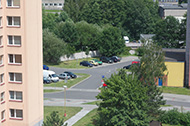 Samsung NX 11 (14.6MPx APS-C) click to enlarge |
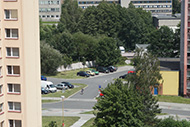 Sony A6300 (24.3MPx APS-C) click to enlarge |
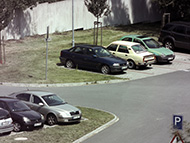 ELP USB camera (8MPx 1/3.2-inch) click to enlarge |
As we have already said, we are comparing different pixel densities with the same lens mounted. In other words, we compare the image quality for a given angle of view provided by one particular lens. Therefore, we have created the same 1/3.2-inch crop from all sensors.
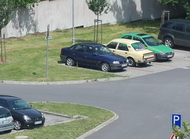 Samsung NX 11 (14.6MPx APS-C) click to enlarge |
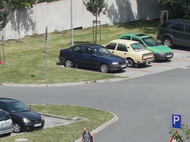 Sony A6300 (24.3MPx APS-C) click to enlarge |
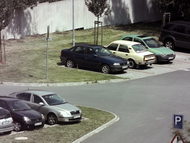 ELP USB camera (8MPx 1/3.2-inch) click to enlarge |
You can see the source files for our test here. All the images were taken with 1/3.2-inch image area with the same 58mm lens and the aperture was set to F4. Therefore, the angle of view is the same. Because ELP USB camera used all of its 8 megapixels (with 1.4-µm size), it has full 8MPx resolution 3264×2448 pixels.
Sony A6300 uses much larger 3.9-µm pixels, therefore, the 1/3.2-inch area (4.57×3.43 mm) consists of much smaller amount of pixels. The 1/3.2" crop has 1172×879 pixels only (1.03 MPx)!
It is obivous that larger pixels create smaller number of pixels. The pixels are 3.9×3.9 µm, that is 15.2µm2 in Sony camera. In the ELP case, the pixels are just 1.4×1.4µm = 1.96 µm2. The area of pixels is 7.76× smaller (15.2/1.96) and the resolution is 7.76× higher (8.0/1.03).
Samsung NX11 has even larger 5.1-µm pixels. In this case, the 1/3.2-inch area resulted in the image with the resolution of 922×673 pixels only (0.62 MPx). Everything is caused by the different pixel density at the same image area.
You can see a dramatic improvement when smaller 3.9-µm pixels are used over the bigger 5.1-µm ones. It is also caused because of the quite strong low-pass filter in Samsung NX11 camera. On the other hand, 3.9-µm pixels are obviously not the limit for a 40 years old Russian lens. Let us note that 3.9-µm pixels correspond to almost 59MPx full frame sensor.
Look at the registration plates. Samsung NX11 was not able to provide any detail, Sony A6300 provides little clues of what is there (we can guess the numbers and letters but we cannot be sure). On the other hand, 1.4-µm pixels with the same lens mounted provide such a large amount of information that the registration plate is readable without any problem. On top of that, you can still see that lines are not blurred and there is a possibility that the number of details can be increased with even smaller pixels and higher pixel density.
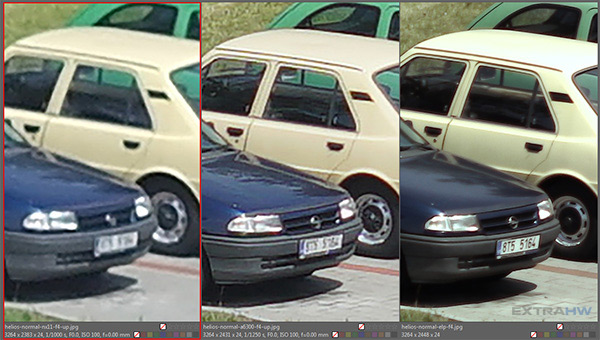
Helios-44M lens @ F4 (enlarged), 5.1-micrometre / 3.9-micrometre / 1.4-micrometre pixels, click to enlarge
In this image, we have tested the image quality when the photo is printed or displayed on the same predescribed size. Remember, we have used the same image area (1/3.2-inch crop from all the sensors), the same Helios-44M lens in front of these sensors, only the resolution and pixel density differ. If you have, for example, the screen with 3264×2448-pixels resolution (approx. 4K), this is what you will achieve when viewed at 1:1 full screen. When the image is displayed at the same area, the sensor with big pixels (NX11 in our case) provides small resolution (0.62 MPx only) and more significant interpolation is needed to achieve final size of the screen (8 MPx).
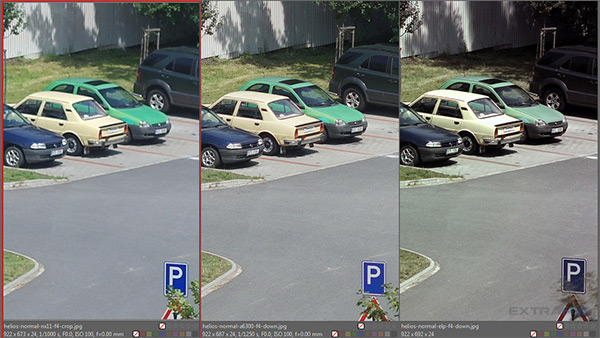
Helios-44M lens @ F4 (downscaled), 5.1-micrometre / 3.9-micrometre / 1.4-micrometre pixels, click to enlarge
If we downscale the images to the level of the sensor with the largest pixels, we can still see the dominance of smaller pixels. A6300 (3.9-µm pixels) is much sharper than NX11 with 5.1-µm pixels and ELP camera with 1.4-µm pixels is even more detailed than A6300. With the smaller pixels, you overcome the problems of Bayer interpolation.
Even though we have used F16 aperture that causes the diffraction in the second test, the higher pixel density still provides higher amount of details. We can prove that when we enlarge all the images to the same level.
Surprisingly, even the diffraction is not a big problem. We have used F16 in all the cases, the images are more blurred, but it is still obvious that the smaller pixels give more detailed results. Of course, it is not appropriate to make conclusion when only one lens is tested, therefore, we have added two more M42 lens. We will show the results at F8 aperture.
Very similar results are visible when Pentacon 50mm F1.8 M42 lens is used. The 1.4-µm pixels provide the highest resolution.
We will also show the enlarged images in order to match the output 8MPx resolution. When you want to present the image at a given area, the 1.4-µm pixels are much better. It is hard to believe that the difference is so significant and that this decades old lens can utilize such small pixels and high pixel density.
Helios 135mm F2.8 is not one of the sharpest lens and the images are going to show that. Even though, the better details are again provided by the sensor with the highest resolution. Native resolution is presented above.
In this last image, we have enlarged crops to achieve the same size of object at the same given area. Very good details provided by the ELP camera are visible on the registration plate, especially look at the "CZ" sign. On the other hand, you can clearly see that the difference between 5.1-µm and 1.4-µm is not so extreme when compared with Pentacon or Helios-44M lens.
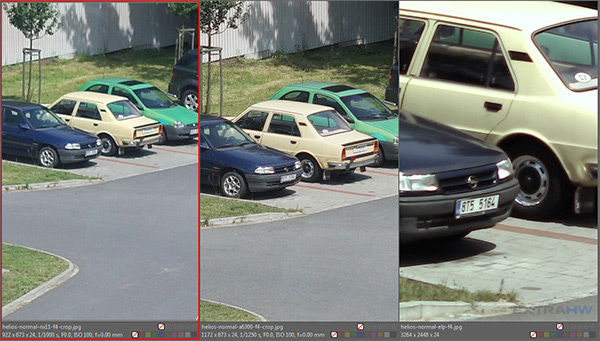
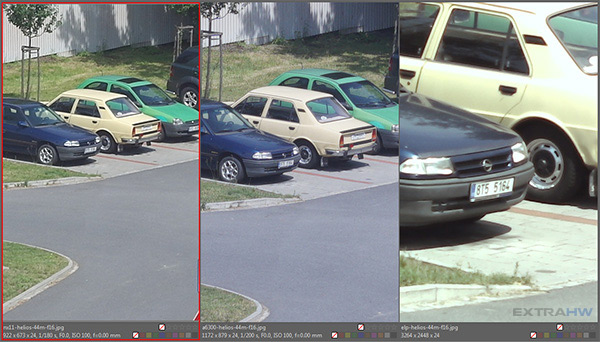
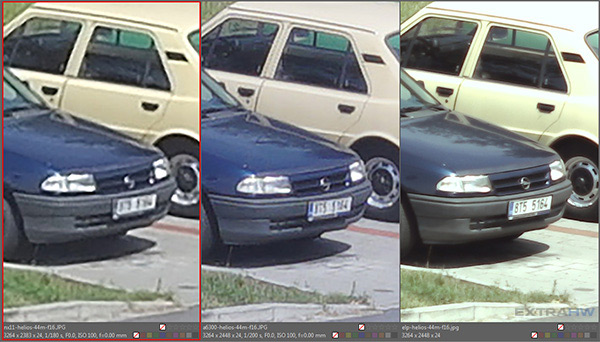
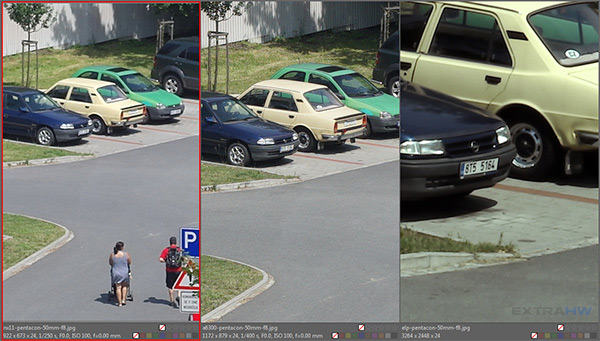
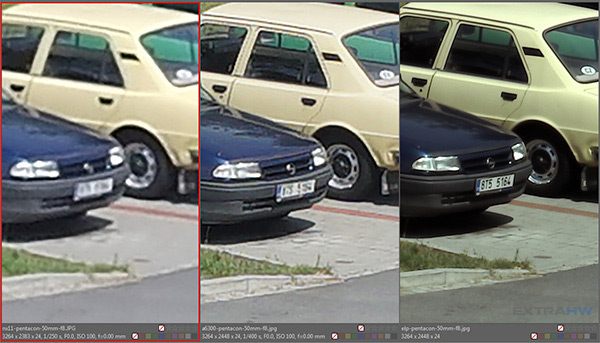
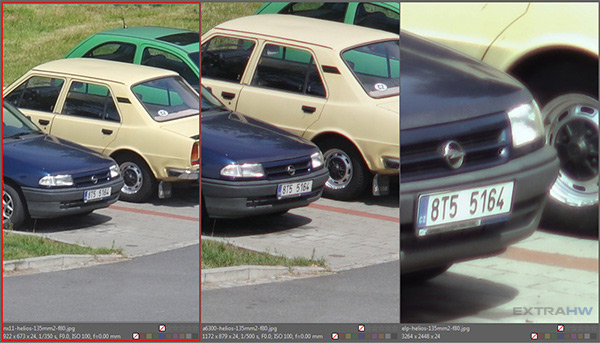
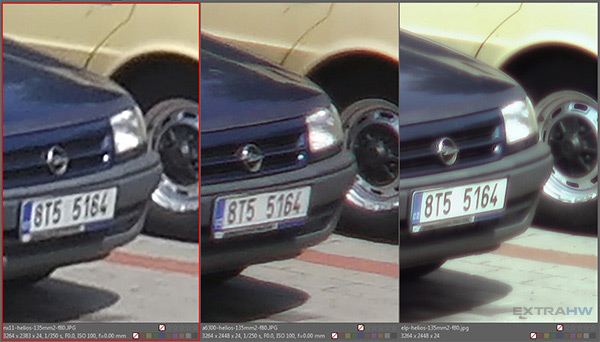
.jpg)



.jpg)


